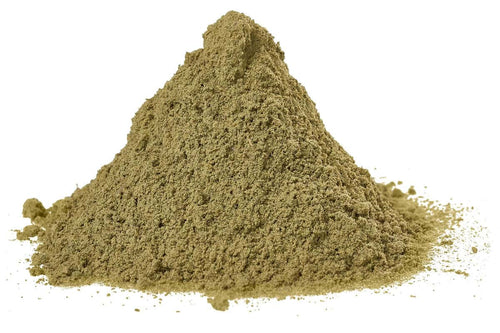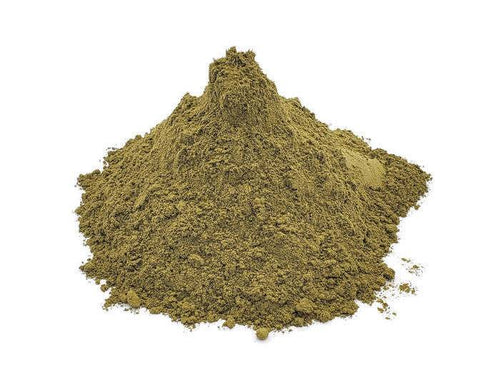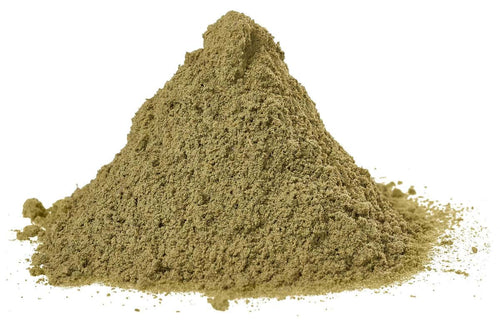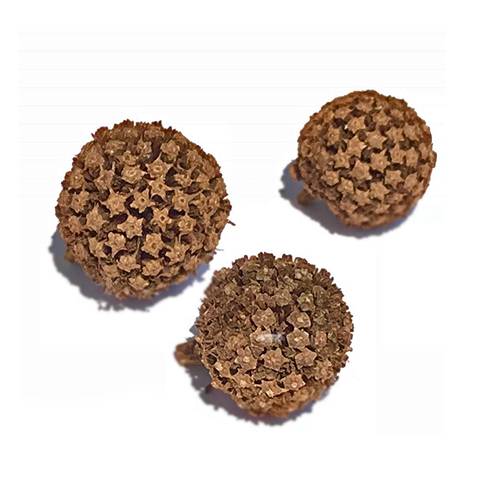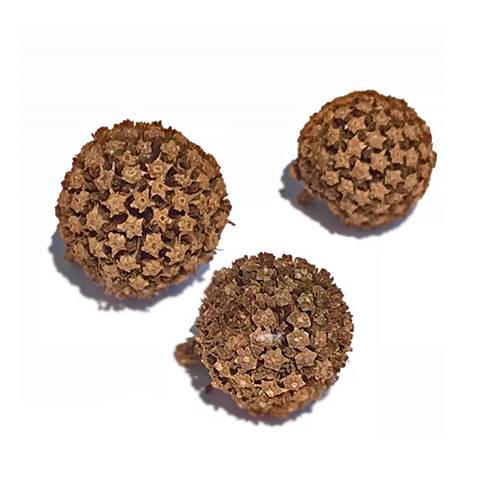Key Takeaways
- Leaf maturity significantly influences the alkaloid profile of kratom strains
- The vein color (red, white, green, yellow) correlates with different stages of leaf maturity
- Younger leaves (white veins) have different properties than mature leaves (red veins)
- Harvesting techniques and timing are crucial for determining strain characteristics
- Processing methods further enhance the natural properties associated with leaf maturity
- Ethical harvesting practices preserve plant sustainability and potency
Introduction to Kratom Leaf Maturity
The journey of understanding kratom begins with the leaf itself. Leaf maturity is one of the most important factors that affects different kratom varieties. The Mitragyna speciosa plant, which grows in Southeast Asia, produces leaves that change a lot as they grow. These changes create different properties at each stage of growth.
The maturity of kratom leaves directly relates to their alkaloid content, including mitragynine, 7-hydroxymitragynine, and over 40 other compounds. These alkaloids appear in different amounts depending on how developed the leaf is. This creates the wide range of kratom strains we have today. The complex changes that happen during leaf growth create unique alkaloid profiles that define each strain's special qualities.
Understanding how leaf maturity affects strain characteristics is important for both growers and users. Our extensive leaf collection shows the amazing variety that comes from harvesting leaves at different growth stages. This knowledge helps farmers plan their harvests and helps users choose products that match what they're looking for.
The Science Behind Leaf Maturity and Vein Colors
The most obvious sign of kratom leaf maturity is the color of its veins. These colors – mainly red, white, and green – are natural markers of the leaf's growth stage and tell us about the plant's alkaloid profile. The changing vein color shows the chemical changes happening inside the leaf as it grows.
Vein Color Progression
The development of kratom leaves follows a predictable pattern of vein color changes:
1. White Veins (Young Leaves): Younger kratom leaves typically display white veins. At this early stage of development, the leaves contain a specific alkaloid profile that distinguishes white vein varieties. The mitragynine content is present but still developing, while other alkaloids exist in different proportions compared to more mature leaves. Our White Borneo Kratom exemplifies the characteristics of leaves harvested during this early maturity phase, showcasing the bright, vibrant properties associated with younger foliage.
2. Green Veins (Mid-Maturity): As the leaves continue to mature, their veins transition to a green color. This intermediate stage of maturity yields a balanced alkaloid profile. The mitragynine content increases significantly during this phase, while other alkaloids reach optimal levels. Green Bali Kratom, one of our popular offerings, is harvested during this optimal middle phase of leaf development, providing a well-rounded representation of the plant's natural properties.
3. Red Veins (Fully Mature): The final stage of leaf maturity is characterized by red veins. These fully mature leaves contain the highest concentration of certain alkaloids that develop over time. The mitragynine content stabilizes, while 7-hydroxymitragynine and other alkaloids reach their peak levels. The leaf's cellular structure also becomes more robust, with increased fiber content and developed resins. Our premium Red Bali Kratom is derived from leaves at this advanced stage of maturity, capturing the rich properties that only fully developed leaves can offer.
4. Yellow Veins (Special Processing): Yellow vein kratom, such as our Yellow Maeng Da, represents a unique category resulting from specialized drying techniques applied to leaves at specific maturity stages. This processing method alters the natural alkaloid profile, creating distinctive properties that bridge the characteristics of different maturity levels. The result is a variety that offers a unique experience compared to the standard vein colors.
Biochemical Changes During Maturation
The transition between vein colors represents significant biochemical changes within the leaf. As kratom leaves mature:
- Alkaloid concentrations shift and evolve, with certain compounds increasing while others decrease or transform through metabolic processes
- Chlorophyll levels change, affecting the leaf's color and photosynthetic capacity as the plant allocates resources differently throughout the leaf's lifecycle
- The leaf's physical structure becomes more robust and fibrous, developing additional cellular reinforcement and protective compounds
- Natural compounds develop that influence the leaf's characteristics, including flavonoids, polyphenols, and various terpenes that contribute to the overall profile
These natural changes are why we at Mitra Science carefully monitor leaf maturity when sourcing our powdered leaves collection, ensuring consistent quality across all our kratom varieties. Our partnerships with experienced farmers allow us to select leaves at precisely the right stage of development for each strain, resulting in products that accurately represent the intended characteristics of each variety.
Harvesting Techniques and Their Impact on Strain Properties
The timing and method of harvest play crucial roles in determining the final properties of kratom strains. Expert harvesters understand that leaf maturity is not simply about age but about harvesting at precisely the right moment to capture desired characteristics. This requires intimate knowledge of the plant's growth patterns and environmental responses, as well as the ability to identify subtle indicators of optimal maturity that may vary by strain and growing region.
Strategic Harvesting Based on Maturity
Experienced kratom farmers employ various harvesting strategies:
1. Selective Picking: Rather than harvesting entire trees, skilled farmers select individual leaves based on their maturity level. This precision approach allows for the creation of consistent strain varieties. They carefully examine vein color, leaf texture, and other subtle indicators to identify leaves at the optimal stage of development. This meticulous selection process ensures that only leaves with the desired maturity characteristics are included in each batch.
2. Seasonal Considerations: The time of year affects leaf maturity and alkaloid development. Seasonal variations in rainfall, sunlight, and temperature all influence the leaf's maturation process and resulting properties. Expert farmers understand these patterns and adjust their harvesting schedules accordingly, sometimes accelerating or delaying harvests based on environmental conditions to maintain consistent quality. This deep knowledge of seasonal influences allows for optimization of alkaloid profiles throughout the year.
3. Regional Variations: Geographic factors create distinct growing conditions that affect how leaves mature. Soil composition, elevation, humidity levels, and surrounding vegetation all contribute to unique growing environments that influence leaf development. Our Green Horn Kratom and Red Horn Kratom showcase how regional growing conditions influence leaf development, with their distinctive serrated leaf edges being a direct result of specific environmental factors.
4. Sustainable Practices: Ethical harvesting ensures not only the highest quality product but also the sustainability of kratom cultivation. Responsible farmers limit the number of leaves harvested from each tree, allowing sufficient foliage to remain for continued photosynthesis and healthy growth. At Mitra Science, all our kratom products are ethically sourced, allowing trees to regenerate properly between harvests. This approach maintains the long-term viability of the plants while promoting optimal alkaloid development in future harvests.
Quality Indicators Related to Leaf Maturity
When assessing kratom quality, several factors related to leaf maturity come into play:
- Color Consistency: Uniform coloration indicates leaves harvested at similar maturity levels, ensuring a consistent alkaloid profile throughout the batch. This visual consistency is one of the first indicators of quality processing and proper maturity selection.
- Texture: Properly matured leaves produce powder with consistent texture. Young leaves may create powder that's too fine and dusty, while overly mature leaves can result in coarse, fibrous material. The ideal texture balances fineness with substance, reflecting optimal cellular development.
- Aroma Profile: Each maturity stage produces distinct aromatic properties. The natural scent of kratom powder provides valuable insights into its maturity level, with different strains exhibiting characteristic earthy, floral, or herbal notes depending on when they were harvested.
- Lab Testing Results: Scientific analysis confirms alkaloid profiles associated with proper maturity. Advanced testing can identify the presence and concentration of key compounds, verifying that leaves were harvested at the appropriate stage of development for their strain designation.
All kratom products at Mitra Science undergo rigorous testing to ensure they meet our exacting standards for quality, as indicated by our commitment to providing premium Mitragyna Speciosa varieties. This testing verifies that each batch accurately represents the intended maturity characteristics of its strain designation, providing customers with confidence in the consistency and authenticity of our products.
Processing Methods That Enhance Natural Maturity Characteristics
While leaf maturity establishes the foundation for kratom's properties, various processing techniques can enhance, preserve, or modify these natural characteristics. Understanding these methods provides insight into how leaf maturity interacts with processing to create the final product. The art of kratom processing involves careful consideration of how different techniques affect the alkaloid profile established during the leaf's development stage.
Drying Techniques
The drying process significantly influences how the natural properties of leaves at different maturity stages are expressed in the final product:
1. Sun Drying: Traditional sun drying preserves the natural characteristics associated with the leaf's maturity level. This method allows for gentle dehydration that maintains the alkaloid profile while initiating certain enzymatic processes that can enhance desired properties. The intensity and duration of sun exposure are carefully monitored to prevent degradation of sensitive compounds. This method is commonly used for red vein varieties like our Red Maeng Da Kratom, where the extended drying period complements the mature leaf's natural alkaloid profile.
2. Indoor Drying: Controlled indoor environments allow for precise manipulation of humidity and temperature, which can enhance specific properties based on the leaf's maturity stage. This method provides protection from unpredictable weather conditions and allows for standardization of the drying process. By controlling these variables, processors can emphasize certain characteristics while minimizing others, fine-tuning the final product to achieve specific profiles even within the same maturity category.
3. Fermentation: Specialized fermentation processes can transform the alkaloid profile of leaves, creating unique varieties like our Yellow Maeng Da from leaves at specific maturity levels. This controlled biological process involves allowing natural enzymes and sometimes beneficial microorganisms to modify the leaf's chemical composition. The duration and conditions of fermentation are carefully managed to achieve the desired transformation without compromising quality or safety.
4. Specialized Techniques: Proprietary processing methods can further refine and enhance the natural characteristics associated with different maturity stages. These may include specific temperature cycling, controlled oxidation, or unique drying sequences that have been developed through years of experimentation and traditional knowledge. These advanced techniques allow for the creation of distinctive products that highlight specific aspects of the leaf's natural properties.
Creating Specialized Strains
Some of the most sought-after kratom varieties result from combining leaves of different maturity levels or applying specialized processing to leaves at specific stages of development:
- Maeng Da Varieties: Our premium White Maeng Da and Red Maeng Da kratom powders represent carefully selected leaves at optimal maturity stages. The term "Maeng Da" translates roughly to "pimp grade" and indicates a superior selection process where only the most robust leaves with ideal maturity characteristics are chosen. These premium varieties undergo additional quality control steps to ensure they represent the pinnacle of their respective maturity categories.
- Horned Varieties: The unique characteristics of Green Horn and Red Horn kratom relate directly to harvesting leaves with distinctive serrated edges at specific maturity points. These special leaf formations occur due to genetic and environmental factors and are believed to indicate unique alkaloid distributions. The timing of harvest is particularly critical for these varieties, as the horn-like leaf edges develop and change throughout the maturation process.
- Extract Production: Our extract collection utilizes advanced techniques to concentrate the natural compounds present in leaves at optimal maturity stages. These processes carefully preserve the alkaloid profiles associated with specific maturity levels while removing plant material and concentrating the active compounds. The result is a potent product that maintains the characteristic properties of its source material's maturity stage in a more concentrated form.
Regional Variations in Leaf Maturity Patterns
The geographical origin of kratom significantly influences how leaves mature and develop their characteristic properties. Environmental factors create distinct growing conditions that affect the leaf's maturation process. These regional differences contribute to the wide variety of kratom strains available today, with each region producing leaves with subtly different maturity characteristics even at the same developmental stage.
Geographic Influences on Maturation
Different regions produce distinct leaf maturity characteristics:
1. Indonesian Varieties: Indonesian growing conditions, particularly in Borneo, create ideal environments for leaves to develop robust alkaloid profiles. The rich volcanic soil, consistent rainfall patterns, and specific humidity levels create optimal conditions for kratom trees to thrive and produce leaves with exceptional properties. Our White Borneo Kratom showcases the unique properties of leaves harvested from this region, demonstrating how the specific growing conditions of Borneo influence the development of white-veined leaves and their characteristic alkaloid profile.
2. Thai Varieties: Traditional Thai kratom varieties, including the famed Maeng Da, reflect the specific soil composition and climate conditions that influence leaf development in Thailand. The alternating wet and dry seasons of Thailand create a distinctive growth pattern that affects how leaves mature and develop their alkaloid content. Thai varieties often exhibit unique maturation patterns, with leaves developing certain characteristics more rapidly or intensely than those grown in other regions due to the specific environmental stressors present in the Thai climate.
3. Malaysian Varieties: Malaysian kratom exhibits unique maturity characteristics due to the region's distinctive rainfall patterns and humidity levels. The consistent moisture and moderate temperatures create growing conditions that allow for steady, even development of leaves throughout their maturation cycle. This results in Malaysian varieties displaying particularly balanced alkaloid profiles at each stage of maturity, with less dramatic differences between young and mature leaves compared to varieties from regions with more extreme climate variations.
4. Specialized Microclimates: Even within the same country, microclimates can create notable differences in how leaves mature and express their properties. Factors such as elevation, proximity to water sources, surrounding vegetation, and local weather patterns create unique growing environments that influence leaf development. These microclimate variations contribute to the remarkable diversity within regional strain categories, with trees growing just miles apart sometimes producing leaves with noticeably different maturity characteristics.
Cultural Harvesting Traditions
Indigenous knowledge about leaf maturity has been refined over generations:
- Traditional Timing: Local farmers possess generations of knowledge about optimal harvesting times based on leaf maturity. This ancestral wisdom includes understanding subtle visual cues, seasonal patterns, and even lunar cycles that influence when leaves reach their ideal maturity stage. These traditional timing methods often align remarkably well with modern scientific understanding of alkaloid development, demonstrating the accuracy of knowledge developed through centuries of observation and experience.
- Seasonal Awareness: Understanding how seasonal changes affect leaf maturity patterns allows traditional farmers to adjust their harvesting schedules throughout the year. They recognize that leaves mature differently during wet versus dry seasons, with varying rates of development and slightly different alkaloid profiles. This nuanced understanding of seasonal influences enables consistent quality despite changing environmental conditions.
- Cultural Significance: The importance of proper maturity selection in traditional practices extends beyond practical considerations to cultural and spiritual dimensions. In many indigenous communities, the careful selection of leaves at appropriate maturity stages is considered essential for respecting the plant's spirit and ensuring its beneficial properties. These cultural beliefs have helped preserve sustainable harvesting practices that maintain both plant health and optimal alkaloid development.
- Knowledge Transfer: How traditional harvesting wisdom is being preserved and integrated with modern cultivation techniques represents an important aspect of kratom's ongoing development. As demand grows globally, finding ways to scale production while maintaining the precision of traditional maturity selection presents both challenges and opportunities. The most successful approaches combine respect for indigenous knowledge with appropriate modern techniques that enhance consistency and efficiency without compromising quality.
These cultural traditions inform our approach at Mitra Science, where we respect and incorporate traditional knowledge while employing modern quality control measures. Learn more about these traditions in our blog post on Kratom's Cultural Healing Traditions Across Southeast Asia.
Cultivation Practices That Influence Leaf Maturity
The cultivation environment and farming practices significantly impact how kratom leaves mature and develop their characteristic properties. At Mitra Science, we work with farmers who understand these crucial factors. The care taken during cultivation directly affects how leaves progress through their maturity stages and ultimately determines the quality and consistency of the final product. Responsible cultivation practices not only produce superior kratom but also ensure the sustainability of this valuable botanical resource.
Environmental Factors
Several environmental conditions directly influence how kratom leaves mature:
1. Soil Composition: Nutrient-rich soil promotes healthy leaf development and optimal alkaloid production during maturation. The specific mineral content of the soil affects not only the rate at which leaves mature but also the proportion and concentration of various alkaloids they produce. Volcanic soils, rich in certain minerals, often yield leaves with distinctive maturity characteristics compared to those grown in sandy or clay-based soils. The soil's pH level also influences nutrient availability and uptake, affecting how leaves develop throughout their growth cycle.
2. Sunlight Exposure: The amount and quality of sunlight affect photosynthesis and the rate at which leaves mature. Trees growing in partially shaded areas often produce leaves that mature more slowly but develop different alkaloid profiles compared to those in full sun. The intensity of ultraviolet radiation, which varies by elevation and geographic location, triggers specific biochemical responses in the leaves that influence their alkaloid development. Skilled farmers understand these relationships and may selectively prune surrounding vegetation to optimize sunlight exposure for their kratom trees.
3. Water Availability: Proper irrigation supports consistent leaf growth and maturation patterns. Both overwatering and drought conditions can stress the plant, altering how leaves develop and potentially changing their alkaloid profiles. The timing of watering relative to the leaf's developmental stage can also influence maturity characteristics, with water stress at specific points sometimes triggering increased alkaloid production as a natural defense mechanism. Experienced cultivators carefully manage irrigation to maintain ideal moisture levels throughout the growing season.
4. Climate Conditions: Temperature, humidity, and seasonal variations all influence the leaf maturation process. Kratom trees thrive in warm, humid environments, but specific temperature ranges and humidity levels affect how quickly leaves mature and which alkaloids predominate at different stages. Seasonal patterns create natural cycles of growth and dormancy that influence leaf development, with the transition between wet and dry seasons often marking significant shifts in maturation patterns and alkaloid production.
For those interested in cultivation, our seeds collection provides access to quality kratom seeds, and our blog post on 12 Essential Tips for Growing Live Kratom Plants at Home offers valuable guidance.
Sustainable Farming Practices
Ethical and sustainable cultivation practices not only preserve the environment but also enhance the quality of kratom leaves:
- Organic Growing Methods: Avoiding chemical pesticides and fertilizers allows leaves to develop naturally, without artificial compounds that might interfere with alkaloid production or remain as residues in the final product. Organic cultivation practices support beneficial soil microorganisms that form symbiotic relationships with kratom trees, enhancing nutrient uptake and supporting healthy leaf development. These methods also preserve local biodiversity, creating a balanced ecosystem that naturally regulates potential pests and diseases.
- Pruning Techniques: Strategic pruning encourages healthy leaf growth and optimal maturation by improving airflow, reducing disease pressure, and directing the plant's energy toward developing high-quality foliage. Proper pruning can influence how resources are allocated within the plant, potentially enhancing alkaloid production in remaining leaves. These techniques also promote a more balanced canopy structure that allows for even sunlight distribution, resulting in more consistent leaf maturity throughout the tree.
- Harvest Rotation: Allowing trees adequate recovery time between harvests ensures consistent leaf quality and sustainable production over many years. This approach prevents exhaustion of the plant's resources and allows for complete regeneration of the canopy before the next harvest. Rotating which sections of a tree are harvested can further enhance sustainability, allowing some areas to fully mature while others recover. This thoughtful approach to harvest timing maintains the tree's health while optimizing the quality of harvested leaves.
- Biodiversity Maintenance: Preserving the natural ecosystem surrounding kratom trees supports overall plant health and contributes to the development of complex alkaloid profiles. Diverse plant communities provide natural protection against pests, improve soil quality, and create microclimates that can enhance desirable leaf characteristics. Maintaining forest biodiversity also preserves the genetic diversity of wild kratom populations, which represents an invaluable resource for future cultivation and breeding programs.







